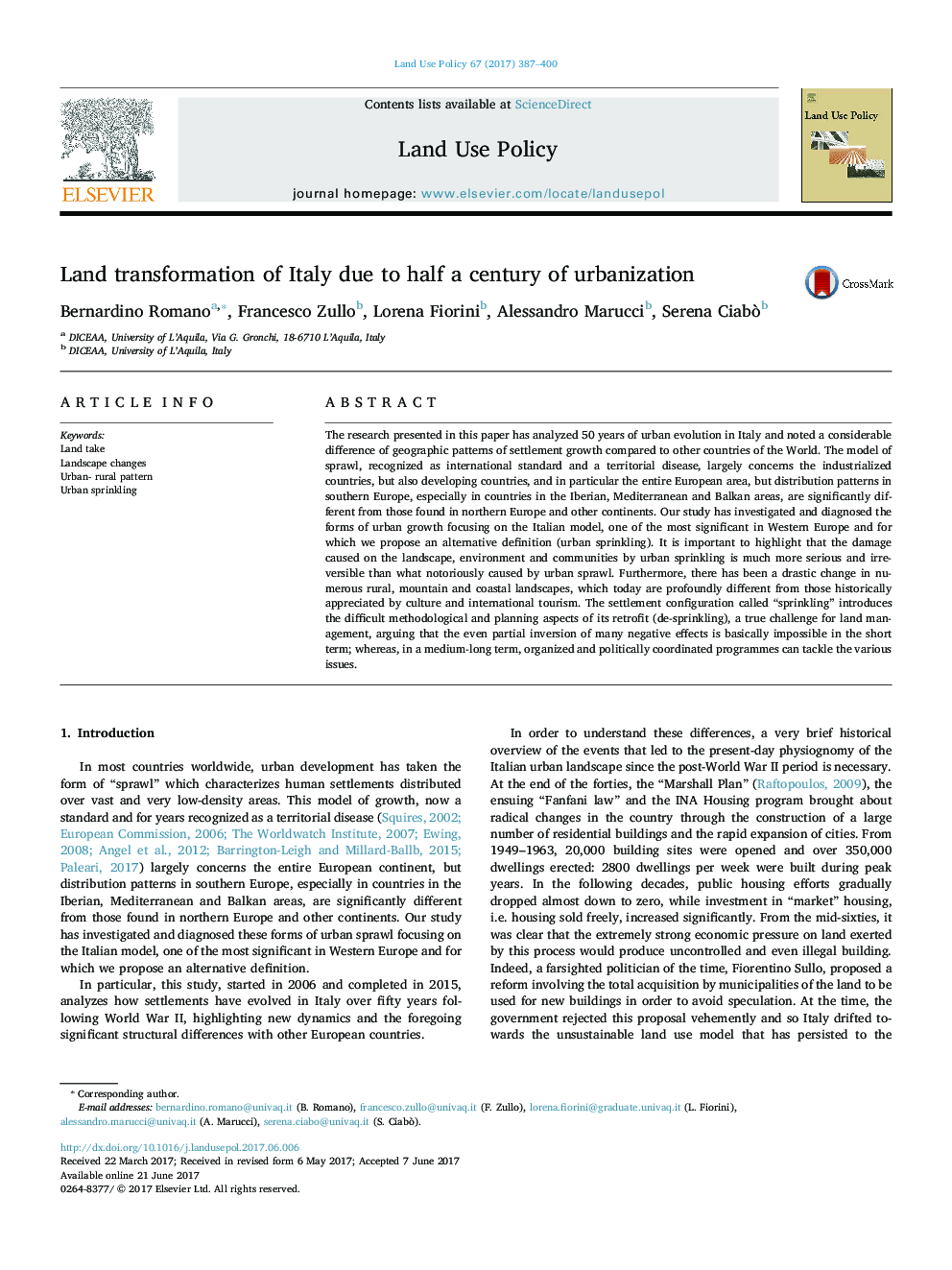| Article ID | Journal | Published Year | Pages | File Type |
|---|---|---|---|---|
| 6460688 | Land Use Policy | 2017 | 14 Pages |
The research presented in this paper has analyzed 50 years of urban evolution in Italy and noted a considerable difference of geographic patterns of settlement growth compared to other countries of the World. The model of sprawl, recognized as international standard and a territorial disease, largely concerns the industrialized countries, but also developing countries, and in particular the entire European area, but distribution patterns in southern Europe, especially in countries in the Iberian, Mediterranean and Balkan areas, are significantly different from those found in northern Europe and other continents. Our study has investigated and diagnosed the forms of urban growth focusing on the Italian model, one of the most significant in Western Europe and for which we propose an alternative definition (urban sprinkling). It is important to highlight that the damage caused on the landscape, environment and communities by urban sprinkling is much more serious and irreversible than what notoriously caused by urban sprawl. Furthermore, there has been a drastic change in numerous rural, mountain and coastal landscapes, which today are profoundly different from those historically appreciated by culture and international tourism. The settlement configuration called “sprinkling” introduces the difficult methodological and planning aspects of its retrofit (de-sprinkling), a true challenge for land management, arguing that the even partial inversion of many negative effects is basically impossible in the short term; whereas, in a medium-long term, organized and politically coordinated programmes can tackle the various issues.
